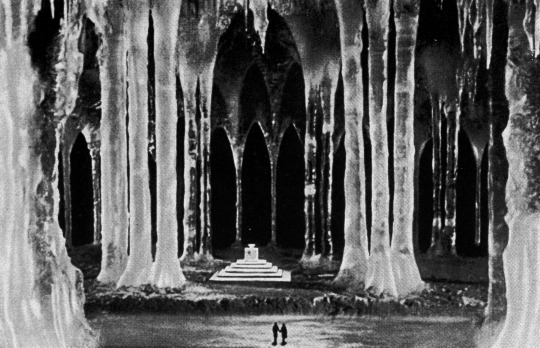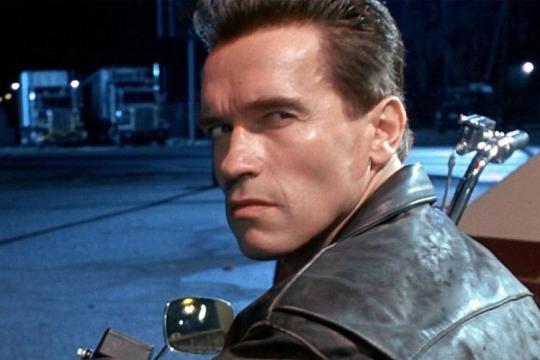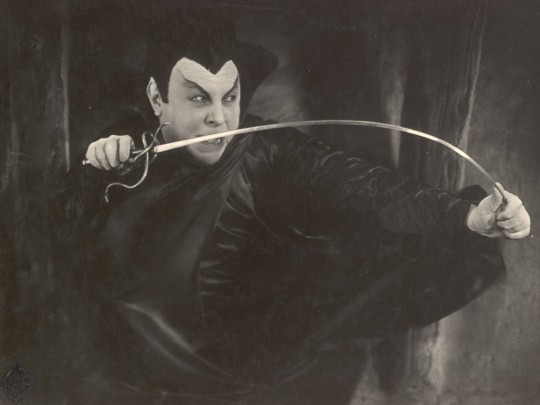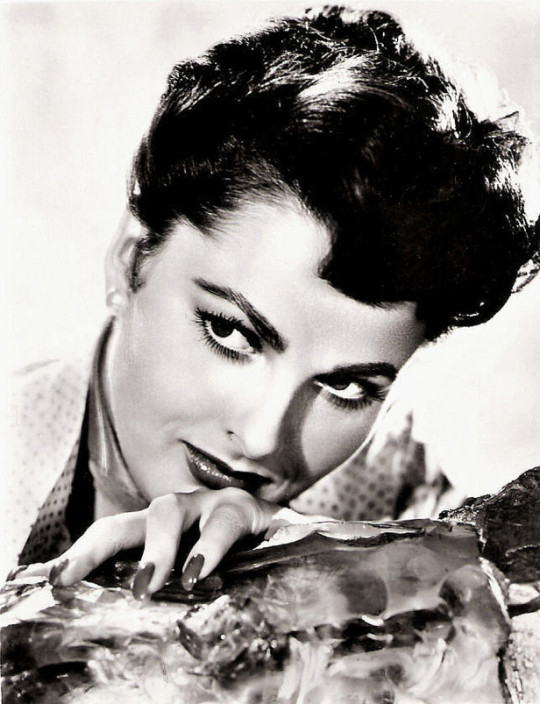#universum film ag
Text
Zarah Leander: Merci Mon Ami (1930s and 1940s German Songs Remastered) 2CD-New $29.99
Zarah Leander (15 March 1907 – 23 June 1981) was a Swedish singer and actress whose greatest success was in Germany between 1936 and 1943, when she was contracted to work for the state-owned Universum Film AG (UFA). Although no exact record sales numbers exist, she was probably among Europe’s best-selling recording artists in the years prior to 1945.
The career of Berlin singer Zarah Leander has…

View On WordPress
0 notes
Photo

DILLA veröffentlicht neue Single STAR, Debütalbum ALSO BIN ICH erscheint am 06.10.
📣 https://mister-mixmania.com/de/news/musik-news/dilla-veroeffentlicht-neue-single-star-debuetalbum-also-bin-ich-erscheint-am-06-10/
Tagged as ALSO BIN ICH, Dilla Manchmal fühlt es sich so an, als würde DILLA inmitten eines Films leben. Er spielt in einem Aperol-orangenen Universum, ist eine chaotische Kreuzung aus romantischer Coming-of-Age-Komödie und ausgeflipptem Actioner. Der rote Faden, der ..... : #musiknews #musik #ALSOBINICH #Dilla
Foto Credits: DILLA
0 notes
Text

The Last Command (1928)
Before their professional rupture while making The Blue Angel (1930), both Josef von Sternberg and Emil Jannings came from German-speaking environments to find success in Hollywood. But while von Sternberg’s family emigrated to the United States from Austria in his teenage years, Jannings carved out a reputation of playing larger-than-life protagonists in Universum-Film AG (UFA) films such as F.W. Murnau’s The Last Laugh (1924) and Faust (1926). His rising star spurred Paramount to offer Jannings a short-term contract that lasted two-and-a-half years and six features. Of Jannings’ extant movies at Paramount*, The Last Command is the one that has brought the most acclaim.
We open in 1928 Hollywood. While shooting a Russian Revolution picture, Russian expatriate director Leo Andreyev (an underutilized William Powell) selects Sergius Alexander (Jannings; whose character is living in poverty and takes jobs as a Hollywood extra) out of a heap of casting photos. Leo’s decision to cast Sergius is less magnanimous than it first appears to be, but to say more would be to spoil the ending. While in the dressing room, Sergius reminisces about events a decade prior. Flash back to 1917 Imperial Russia. Grand Duke Sergius Alexander, cousin of the Tsar, Commanding General of the Russian Armies (for students of Russian history and politics, this is analogous to “Chief of the General Staff”), is commanding the tsarist troops to battle Bolshevik revolutionaries. Informed that two actors entertaining his soldiers are actually Bolshevik agents, he orders that they be ushered into his office so that he might humiliate them. Sergius has his way with one of the agents, Leo Andreyev. But for Natalie Dabrova (Evelyn Brent), Sergius finds himself attracted to her. Despite the dangers involved, he keeps Natalie by his side. Revolutionary zeal and Stockholm syndrome be damned, they fall in love. The film will conclude when it flashes back to 1928 Hollywood.
Jack Raymond (later a director of films such as 1930’s The Great Game) plays a brief role as Leo’s conceited Assistant Director.
The circumstances and developments surrounding Sergius and Natalie’s romance is far-fetched and contrived beyond belief. Natalie’s reasons for falling for Sergius – paraphrasing her, that she could never believe that someone could love Russia as much as he – are unintentional comedic gold. The film’s best line appears as Sergius realizes that Natalie is not going to act on her revolutionary beliefs to assassinate him: “From now on you are my prisoner of war – and my prisoner of love.” All credit to intertitle writer Herman J. Mankiewicz (1941’s Citizen Kane, 1942’s The Pride of the Yankees) for that screamer of a line. Whatever political differences between the two main characters melts away because of that.
This writing from journeyman screenwriter John F. Goodrich (1933’s Deluge, 1936’s Crack-Up) and the story from Lajos Bíró (1933’s The Private Life of Henry VIII,1940’s The Thief of Bagdad) points to a larger problem regarding the film’s political depictions. Never mind the ideological chasm that exists between a man sworn to uphold the tsarist establishment and a woman to whom that very establishment is the embodiment of all that she and her comrades find loathsome. The Last Command, in keeping with Western attitudes towards the Bolsheviks, is decidedly sympathetic towards Imperial Russia, rather than the inebriated, murder-hungry proletariat mob that wants nothing but bloodshed. There is no political nuance to these depictions. Tsarist Russia is honorable, the unquestionably legitimate state; the Bolsheviks’ demands flattened to simply mindless violence for the sake of it. This is not to deny the facts that there were decent people serving the Tsar nor that the Bolsheviks engaged in excessive violence, but that the film overly simplifies the conditions in 1917 Russia.
Despite his status as one of the most accomplished Hollywood directors working during the transition from silent film to synchronized sound, Josef von Sternberg disdained the Studio System and producer control over filmmaking (if only he was alive to see how things are today!). In The Last Command’s bookending scenes in 1928 Hollywood, von Sternberg takes aim squarely at Hollywood norms. Note the arrogance in which the Assistant Director conducts himself in front of all the extras. How infuriating it must be for the audience when he chastises the elderly Sergius for correcting him about a detail on a Russian general’s uniform: “I’ve made twenty Russian pictures. You can’t tell me anything about Russia!” Filmmaking in this environment, according to The Last Command, is exploitative. There is little to no regard about the wellbeing of all the extras scraping by with a meager day’s wages. As for Leo’s intentions for Sergius, the psychological cruelty in which he directs him is something he may or may not come to regret in the film’s final seconds. In those closing shots, the Assistant Director’s pithy remark encapsulates Hollywood’s wanton disregard for those uncredited many who wove themselves into the magical fabric of Old Hollywood.
The film’s most narratively crucial scenes – excluding the romantic scenes between Sergius and Natalie – make excellent use of extras and the blocking of extras. Whether it is the scene where the Bolsheviks drag Sergius off the train and threaten to hang and mutilate him or the film’s final scene on the studio soundstage, there is a bustling of activity in the background. Von Sternberg and cinematographer Bert Glennon (1939’s Stagecoach and Drums Along the Mohawk) vivify The Last Command with these masses of people. Look at the furious, grasping hands as Sergius as the Bolsheviks tear his outer layers off in the cold – this might not approach the violence of Sergei Eisenstein’s Battleship Potemkin (1925), but that is because the anger here is directed at a solitary figure. The crew behind the camera and the extras reacting organically to Sergius’ acting adds to Jannings’ memorable performance in the climax, empowering a scene very obviously shot on a soundstage.
Somehow, these critical framing scenes from The Last Command escaped the attention of Paramount executives during the film’s production. When learning about them only after seeing the final product, they planned to prevent the film’s release. Also citing von Sternberg’s portrayal of the Russian Revolution (including portraits of Stalin and Trotsky), Paramount’s executives only relented when an unnamed Paramount stockholder compelled them to release The Last Command.
In spite of the questionable central romance and its poor historical representations, The Last Command thrives due to Jannings’ performance. Paramount wanted Jannings for this role due to his reputation as a theatrical, bombastic actor. He does not disappoint here. Taking a page from his performance in The Last Laugh, Jannings’ character similarly takes pride in an article of clothing. Where in The Last Laugh he loses his doorman’s uniform, Jannings regains a general’s uniform in The Last Command. With it, an utterly broken man finds a modicum of self-respect (at the very least), or perhaps it resurfaces the jingoist that once was. The physical transformation and mental turn Jannings embodies is absolutely compelling and deeply tragic. Art then begins to replicate the past too faithfully. Man and character become the same. Jannings won the inaugural Academy Award for Best Actor for The Last Command and The Way of All Flesh (1927)‡, despite German Shepherd Rin Tin Tin (1922’s The Man from Hell’s River, 1925’s The Clash of the Wolves) receiving the most votes in the category. The Academy of Motion Picture Arts and Sciences (AMPAS), wishing to be taken seriously and not wanting to bestow the inaugural Best Actor statue to a dog, gave the award to the runner-up, Jannings.
Back in Weimar Germany, Jannings and von Sternberg would work together on The Blue Angel (1930) – their finest collaboration with each other. But the two clashed repeatedly while making The Blue Angel, mostly over von Sternberg’s fawning over Marlene Dietrich during production. Von Sternberg returned to America and remained with Paramount until 1935, and his Hollywood standing rose alongside Marlene Dietrich's. Following the end of that contract, he bounced around various Hollywood studios, never again finding the cinematic footing he had while at Paramount. By contrast, Jannings remains in the German film industry following The Blue Angel and starred in several Nazi propaganda films that, after the end of World War II, made him unemployable.
As if foreshadowing Sunset Boulevard (1950), The Bad and the Beautiful (1952), and even Singin’ in the Rain (1952), this dramatic unpackaging of Hollywood’s dark underbelly has elements of scathing satire that form the backbone of the its best moments. No matter the mutual accusations of imperiousness, Jannings and von Sternberg while on set of The Last Command, pieced together a film that obscures its true messaging beneath its ridiculous romance.
My rating: 8.5/10
^ Based on my personal imdb rating. My interpretation of that ratings system can be found in the “Ratings system” page on my blog. Half-points are always rounded down.
* The Way of All Flesh (1927), The Patriot (1928), and Street of Sin (1928) are lost; Sins of the Fathers (1928) is only rumored to be intact; and only The Last Command and Betrayal (1929) are extant.
‡ The 1st Academy Awards was the only ceremony in which actors and actresses were nominated for a body of work, rather than their work on an individual film.
For more of my reviews tagged “My Movie Odyssey”, check out the tag of the same name on my blog.
#The Last Command#Josef von Sternberg#Emil Jannings#Evelyn Brent#William Powell#Jack Raymond#Nicholas Soussanin#Michael Visaroff#Fritz Feld#Lajos Bíró#John F. Goodrich#Herman J. Mankiewicz#Bert Glennon#William Shea#silent film#TCM#saveTCM#My Movie Odyssey
0 notes
Photo



45 notes
·
View notes
Photo

Decla-Film-Gesellschaft’s logo in the opening of Das Cabinet des Dr. Caligari (dir. Robert Wiene, 1920).
Decla Film was formed in 1911 as the German subsidiary of the French company Eclair, it was taken into German ownership in 1915 during the First World War. Decla is an abbreviation for Deutsche Eclair.
In 1916 Decla-Film-Gesellschaft Holz & Co was founded by Erich Pommer and the co-founder Berlin film distributor Fritz Holz.
In 1920 Decla merged with Bioscop Film to form Decla-Bioskop A.G. In 1923 the company became a part of the UFA – Universum-Film AG, and acted as a subsidiary. Nowadays, it's known as Studio Babelsberg.
#decla#deutsche eclair#decla film#decla-film-gesellschaft holz & co#decla-bioskop a.g.#decla-bioscop#ufa#universum-film ag#studio babelsberg#das cabinet des dr. caligari#the cabinet of dr. caligari#robert wiene#company logo#offended eagle#as they claim to be its nickname#silent movie#weimar cinema#own gif#own post
5 notes
·
View notes
Text
youtube
While putting together some music videos for my full-length album, Summer's End (which I will release this October 1, 2020), I thought maybe I'd make some videos for my EP, Dua Sutekh, as well. And did you know that Set can manifest as a goddamn BRONTOSAURUS if He wants to? Makes you think!
Stream/download this track and the rest of Dua Sutekh for FREE at this URL:
https://gbmarian.bandcamp.com/album/dua-sutekh
Footage included in this video is from:
Hoyt, H.O. (Director), & Hudson, E. (Producer). (1925). The lost world. United States: First National Pictures. Retrieved from:
https://archive.org/details/TheLostWorld19251080p
Kornblum, H.W. (Director/writer). (1925). Our heavenly bodies [film]. Germany: Kultur department of the Universum-Film AG (Ufa) and Colonna-film G.m.b.H. Retrieved from: https://archive.org/details/Heavenly1920
Standard Oil Company of California. (ca. 1958). Desert venture [film]. Saudi Arabia: Robert Yarnall Richie Productions, Inc. Retrieved from https://archive.org/details/0229_Desert_Venture_23_28_47_00-0034
United States Armed Forces. (1959). Atom bomb effects [film]. Camp Desert Rock, Nevada: RKO-Pathe Productions. Retrieved from https://archive.org/details/0707AtomBombEffects
DesertOfSet.com

2 notes
·
View notes
Text
Governor of California - Wikipedia
Buy
One day after winning his fifth Mister Universum title, Schwarzenegger in Columbus, Ohio, won the revenge for his defeat at Mr. Olympia in the previous year by defeating Sergio Oliva in the Mister World competition. Two weeks later, Schwarzenegger was able to crown the most prestigious championship when he was able to defeat Sergio Oliva again. Due to his very successful and turbulent life, he is considered a prime example of living the "American dream". He became one of the best-known personalities in the United States and one of the most successful action actors in film history. 14 presidents were previously vice presidents. Eight (Tyler, Fillmore, A. Johnson, Arthur, T. Roosevelt, Coolidge, Truman, L. Johnson) took office following the death of the President, one (Ford) for the President resigning during the term. Four incumbent vice presidents (J. Adams, Jefferson, van Buren, GHW Bush) were immediately lowest price elected president, with a president (Nixon) there were eight years between the end of the term as vice president and the beginning of the presidency. Theodore Roosevelt, Calvin Coolidge, Harry S. Truman, and Lyndon B. Johnson were also the only post-presidents who could move up to the presidential election after winning the presidency.

In October of the same year he won his first major bodybuilding competition in Stuttgart with the international junior championship "Bestbuilt Athlete". Immediately after his victory, Schwarzenegger met the Munich businessman Rolf Putziger, in whose bodybuilding studio he took on a position as a trainer in 1966. Also in 1966, Schwarzenegger took part in the NABBA World Championship in London for the first time and at the age of 19 immediately took second place in the amateur category. There are no “short-term presidencies” or “presidents for one day” and never have been. David Rice Atchison is reputed to have served as Deputy President of the Senate for a day, as there was a day between the end of James K. Polk's term in office and Zachary Taylor's swearing in (from March 4 to March 5, 1849) and so did The Vice Presidents' terms had already ended or had not yet begun. Navy One was first used when George W. Bush visited the USS Abraham Lincoln aircraft carrier in 2003 with a Navy jet aircraft. Coast Guard One has not been used yet. As head of the executive, the governor determines the policy guidelines in the US West Coast state. He does not have a cabinet in the narrower sense, but there are executive offices such as the Secretary of State or the Attorney General, as well as other heads of authorities who roughly correspond to a minister. Some of these positions are also chosen by the citizens (like the examples mentioned), but are subordinate to the governor. Others, such as the Agriculture Commissioner, who is equivalent to a Secretary of Agriculture, or the California Director of Industrial Relations (responsible for business and industry) are appointed by the governor with the approval of the State Senate. The biography (2009) most detailed on Schwarzenegger's political career. However, he must have related his allegations to investigations that the FBI and secret services are said to have carried out in his environment in 2016. Supposedly, it should be investigated whether there were any financial connections to Trump from Russia.
1 note
·
View note
Text
Arnold Schwarzenegger visited St. Stephen's Cathedral
"Something is going wrong in our society" - Günter Schwaiger deals with domestic violence in his film "The Diver". Archbishop of Vienna celebrated traditional annual thanks mass with the association "Our St. Stephen's Cathedral" and Mayor Ludwig. Tomoko Mayeda's path to baptism is paved with many encounters, inspirations and of course with music. The rite on the Danube Canal, headed by Metropolitan Arsenios, also commemorates Christians' commitment to environmental protection. Father Markus Langer of the Viennese Dominicans invites interested parties to the “beta - new questions” course.
All offers at a glance
The content may be subject to additional terms. By using this website, you agree to the terms of use and the privacy policy. Critical voices also accused him of failing to honor his pledge to reduce California's budget deficit after two years in office. Up to the age of 18, Schwarzenegger also competed in several Olympic weightlifting competitions, where he became junior state champion in the heavyweight class in 1965. In October of the same year he finally won the first big BB championship in Stuttgart when he was voted "Best-Built Junior Athlete".

Schwarzenegger has been interested in hero and sandal films since his youth. He decided early on to do the same as his role models and to become an actor. His imposing appearance helped Schwarzenegger gain a foothold in the film business - initially under the pseudonym Arnold Strong. His first role was Hercules in the film Hercules in New York (1970), in which his American original voice had to be synchronized due to its strong Styrian accent. With a total of seven Mr. Olympia titles and five Mr. Universum titles, Arnold Schwarzenegger was the most successful bodybuilder of his time and is still regarded as a defining personality in bodybuilding.
edit Schwarzenegger as director
These enable our website to be better serviced. Bishop of Innsbruck names difficulties why not check here of people to bind to a community as a reason for leaving the church. The five-part drama series tells the shocking story of the Chernobyl reactor disaster starring Jared Harris, Stellan Skarsgård and Emily Watson. A total of 262 episodes of the television series have appeared in 12 seasons. The series is still running at ProSieben in the night program and in the early morning. Passengers should feel safer again. Since evil returns to Derry in Maine every 27 years, "ES Chapter 2" takes the characters - who have lost sight of each other since then - back to the place of horror as adults almost three decades after the events of the first film back. As an FBI agent, it was Joe Navarro's job to expose spies, killers and criminals using their body language for 25 years.
1 note
·
View note
Photo










Uránia, one of the most beuatiful cinemas of the world The Uránia fulfilled a scientific and educational role for 17 years. A significant event in its history was in the spring of 1901 when the first independent Hungarian feature film was shot here, directed by Béla Zitkovszky. The legendary 'Dance' featured 23 episodes from the history of dance, including famous actresses, Lujza Blaha dancing the Csárdás and Sári Fedák dancing the Japanese clog. Unfortunately the film was destroyed in a fire soon after it was made, now only a box named 'Dance' in the Main Hall keeps its memory alive. The construction of the Uránia's building was finished in the mid-1890s on today's Rákóczi avenue. The design of the palace, built by Henrik Schmal at the request of Kálmán Rimanóczy, incorporates the Venetian Gothic and the Eastern Moorish styles. The architect was originally commissioned to create a music and dance hall, but the place finally opened as a cabaret. At the turn of the century the Hungarian Academy of Sciences initiated a search for a theatre where the Uránia Scientific Society could hold presentations illustrated by moving pictures. Hence the building was rented from 1899 by the Uránia Society and was given the strange name Uránia Hungarian Scientific Theatre. Later on the function of the building changed, but the name Uránia has remained ever since. The Uránia's interior was first revamped in 1917, to make its halls suitable for film screenings. In 1930 it became a UFA Cinema, modelled on the Berlin Universum Film AG. After World War II, Uránia became the film theatre of Szovexport. In February, 1945, the first film after World War II was shown here, which obviously presented the struggles of the victorious Red Army. Later Hungary regained possession of the building and the film theatre became one of the capital’s favourites.
95 notes
·
View notes
Text
Captain Marvel - Filmkritik
Filmreview in Kürze:
Der neueste Eintrag in das MCU ist der erste Solo-Film mit einem weiblichen Charakter im Mittelpunkt, was natürlich die übliche “Frauen sind keine Menschen, daher dürfen sie keine Superhelden sein”-Wellen im Netz ausgelöst hat, wobei sämtliche Flop-Vorhersagen diesmal besonders peinlich werden dürften, ist der Film doch der letzte Film vor “Avengers: Endgame” und für diesen bekanntermaßen plotrelevant, also war der Vorverkauf von Anfang an bereits ausreichend um einen Flop zu verhindern.
Ganz abgesehen davon, dass “Captain Marvel” wirklich keine feministische Propaganda ist. Natürlich spielen starke Frauen zentrale Rollen in diesem Streifen und trotz Charakteren wie Black Widow, Gamora, oder Wasp (die es letztes Jahr zumindest als Co-Star in den Titel eines MCU-Films schaffte), war es höchste Zeit für einen MCU-Film mit einem weiblichen Lead, und um so erfreulicher ist es, dass wir diesen endlich bekommen, aber letztlich ist das Zielpublikum von “Captain Marvel” in erster Linie ein etwas breiteres: “Captain Marvel” ist am eindeutigsten von allen MCU-Einträgen bisher für die Fans gemacht worden.
Der Film beginnt mit einem Stan Lee Tribut, enthält dessen hintergründigsten Cameo-Auftritt jemals, greift tiefer als jeder andere Film seit “Guardians of the Galaxy” in das Marvel-Comic-Universum, bezieht seine Inhalten aus allen möglichen Ecken der Comics quer durch die Jahrzehnte, spielt in den 1990ern der MCU-Zeitlinie und ist daher - von der Midcredits-Sequenz abgesehen, die offensichtlich aus “Avengers: Endgame” entnommen ist - ein Prequel für die meisten anderen Beiträge der Franchise, das viele Löcher stopft und einige Fragen beantwortet. “Captain Marvel” beweist außerdem wie clever die Macher schon im Vorfeld bei der Promotion dieses Films waren, ja der Film ist vermutlich der comic-nähste MCU-Film bisher, aber er liefert Kennern genug Überraschungen mit denen sie nicht gerechnet hätten. Es ist kein Zufall, dass wir den Namen von Jude Laws Charakters erst so spät im Film erfahren, genauso wie das einzige Gender Bending in diesem Film weniger ein feministischen Statement ist, sondern mehr der Irreführung des eingeweihten Publikums dient (obwohl es für sehr gut informierte Comic-Kenner einen recht frühen Hinweis in dieser Sache gibt). Ja, es gibt eine sehr tiefgreifende Änderung (die ich gerade genannt habe), aber ansonsten wird hier vor allem verschmolzen und ein wenig Backstory auf andere Charaktere verschoben um eine funktionierende Story zusammenzubekommen, zugleich ist dadurch ein eben ein Film herausgekommen, der tatsächlich Neues zu bieten hat, ohne so krass von seiner Vorlage abzuweichen wie manche seiner Vorgänger.
“Captain Marvel” ist natürlich auch ein technisches Wunderwerk. Mit De-Aging Technik werden Samuel L. Jackson und Clark Gregg verjüngt - und anders als bisher wird diese Technik nicht nur szenenweise eingesetzt sondern mehr oder weniger den gesamten Film lang - was zunächst etwas unheimlich erscheint, führt bald dazu, dass man sich daran gewöhnt und das Ganze irgendwann nicht mehr hinterfragt, sondern einfach wirklich den Eindruck bekommt, dass Samuel L. Jackson diesen Film in den 90ern gedreht hätte. Außerdem wissen die eidechsenhaften Skrulls zu begeistern, deren Gegenwart im MCU wir bisher schmerzlich vermisst haben, genau wie die anderen übliche routinierten Action- und Weltraum-Sequenzen.
Der Film wartet mit der MCU-üblichen Mischung aus Story, Action, Herz, und Humor auf. Tatsächlich gibt es sogar eine Szene, die sich verdächtig nach einem Pick-Up anfühlt, der im Zuge der sexistischen Kritik am ersten Trailer entstanden ist - “Captain Marvel” ist ein unglaublich anwesender Film, der vermutlich länger in Entwicklung war als die meisten seiner Kollegen aber trotzdem aktueller daher kommt als jeder von denen. Zuseherinnen, die sich über die Love Story in “Wonder Woman” beschwert haben, können sich hier trösten - das zentrale Thema hier ist Freundschaft und Kameradschaft - Carol und Nick schließen Freundschaft miteinander und auf der Suche nach sich selbst muss die Kree-Kämpferin herausfinden, wer ihre wahren Freunde sind, und findet durch diese zu sich selbst zurück.
Der einzige Schwachpunkt des Films ist letztlich die Antwort auf die Frage, wie Nick Fury sein Auge verloren hat. Der Film spielt mit der Erwartungshaltung der Leute, was das angeht, liefert aber dann leider eine Antwort, die man wohl getrost als “Bad Taste”-Humor bezeichnen kann, auch wenn eine gewisse authentische Wahrheit hinter dem Ereignis selbst liegt, das man dadurch sein Auge verliert ist doch etwas herb...
Carol Danvers sehen wir das nächste mal in “Avengers: Endgame” wieder, aber die meisten Fragen, die dieser Film offen lässt, und davon gibt es einige, werden vermutlich in “Captain Marvel 2″ beantwortet werden, der in irgendeiner Form garantiert kommen wird. Alles hier schreit nach Fortsetzung und die erwachsene Version eines gewissen Charakters wurde hier nicht umsonst geteast und wird aber wohl eher nicht in dem sowieso schon etwas überfüllten “Endgame” eingeführt werden.
Übrigens ist der Film nach “Wonder Woman” der zweite moderne Superheldinnen Film, in dem der Codename der entsprechenden Heldin in dem Film kein einziges Mal genannt wird (aber immerhin wird hier ein Teil des Namens erwähnt, was schon ein Fortschritt ist). Warum das bei diesen Filmen immer so zu sein scheint, kann ich nicht beantworten, aber so lange das größere Rätsel besteht: Warum Männer uns Frauen als Untermenschen ansehen und damit davonkommen, ist das das kleiner Rätsel dieses Films.
I’m not what you think I am.
3 notes
·
View notes
Link
0 notes
Photo

Woman in the Moon (1929, Germany)
By the end of the 1920s, humanity could envision a world where spaceflight might be possible. Several decades before that, the science fiction books of Jules Verne, H.G. Wells, and others thrilled viewers with promise of adventure and the unknown. Also capturing that interest in space would be Georges Méliès’ film, A Trip to the Moon (1902, France) – even if you have never heard of this film, you may be familiar with its most iconic frame. A Trip to the Moon is one of the first science fiction films ever made and, for the 1900s decade, among the most innovative of its time. Though other filmmakers around the world dabbled in science fiction, the genre never truly took off until mid-century.
One of the few filmmakers bringing a sense of spectacle to sci-fi silent films was German director Fritz Lang, best known today for Metropolis (1927) and M (1931). Because of its release in between Metropolis and M, Woman in the Moon tends to be underseen and undermentioned. But, like Metropolis and A Trip to the Moon, it is a silent film exemplar of science fiction. It is a remarkable piece of entertainment in its second half, even as it wastes too much of its runtime on a tiresome subplots that involve gangsters and romance. When Lang brings his showmanship during the crew’s trip to the Moon, the results are unlike any other filmmaker working in cinema at that time.
Businessman Helius (Willy Fritsch) meets with his friend, Professor Mannfeldt (Klaus Pohl), to discuss developments over Helius’ plans to journey to the Moon. The mission was inspired by the Professor’s hypothesis that the Moon, “is rich in gold” – something that has attracted the mockery of his fellow academics. In the shadows, an unidentified gang sends a man calling himself “Walter Turner” (Fritz Rasp) to spy on Mannfeldt and Helius. More trouble comes to Helius when he learns his assistants Windegger (Gustav von Wangenheim) and Friede (Gerda Maurus) announce their engagement. Helius, who has never confessed his love for Friede, finds himself in an awkward romantic bind in the events leading up to launch. On launch day, Helius, his assistants, and Professor Manfeldt board the Friede. But their crew complement includes two others: Walter Turner (who threatens his way onboard) and a stowaway child, Gustav (Gustl Gstettenbaur).
Thea von Harbou, Lang’s wife from 1922-1933, wrote the screenplay, adapting her book The Rocket to the Moon. Just a quick glance through her filmography recalls a number of great Lang-von Harbou collaborations: Dr. Mabuse the Gambler (1922), the Die Nibelungen saga (1924), and Metropolis. She truly is one of the great screenwriters of early cinema, but Woman in the Moon is an underwhelming display of her talents. Von Harbou mires with its Earth-bound scenes, and Woman in the Moon reaps no benefits from its spy subplot. There is a straight science-fiction story buried somewhere in this overlong 169-minute film, but von Harbou overstuffs her screenplay with the potential sabotage of the rocket to the Moon. Never does the viewer feel that Lang’s astronauts are in danger of being blasted to smithereens in outer space or that “Walter Turner” will ever succeed in whatever murderous plots he has hatched. Isolated from whatever themes Woman in the Moon wishes to present, the love triangle that slowly overtakes the rest of the film always feels vestigial to this overcooked story. Compare this overwrought, yet underwritten romantic drama to Metropolis, where the relationship between Gustav Fröhlich’s Freder and Brigitte Helm’s Maria outlines perfectly the tension of their society’s industrial hierarchies and the geography that separates the classes.
Woman in the Moon truly defies gravity only after its launch and touchdown on the lunar surface. The cinematography team led by Curt Courant (1934’s The Man Who Knew Too Much, 1938’s La Bête Humaine) capture the terror of early spaceflight better than some of the more expensive American sci-fi productions would in the 1950s and ‘60s. The speculative lunar sets – which look more like Méliès’ vision for A Trip to the Moon than anything recognizable from the Moon – tower over the movie’s intrepid astronauts as they explore this lifeless (unlike Méliès’ vision) celestial body.
The screenplay, camerawork, production design, and special effects seen in The Woman in the Moon come from the most widely accepted scientific theories of the late 1920s concerning astrophysics and the nature of the Moon. Where some aspects might feel dated (that includes the appearance and breathable atmosphere of the lunar surface and the submersion of the rocket into water before launch), others are prescient. The explanation of how the rocket’s flightpath is so prophetic that it seems as if Thea von Harbou and Fritz Lang sat in on an Apollo mission briefing by NASA. Woman in the Moon also contains the first countdown to launch seen in a sci-fi film (yes, the launch countdown is an invention of Woman in the Moon), as well as a multistage rocket that jettisons parts of the rocket as it exits Earth’s atmosphere. Prior to launch, the rocket’s assembly in a separate structure before transportation out to the launchpad – where it will blast off to space. For a film released in an era that did not make much use of seat belts and Velcro, the utter violence and human disorientation of a rocket launch requires the astronauts to strap themselves into their bunks and hold onto surface restraints.
The frantic editing and startling cinematography of these scenes, coupled with the film’s undercurrent of distrust and ulterior motives, are a Lang staple during the most technically accomplished scenes of his filmography. It is there in the worker montages of Metropolis, the elaborate assassination scene of Dr. Mabuse the Gambler, and the horrific battle sequence of Die Nibelungen: Kriemhild’s Revenge. Those Lang hallmarks find their way late in Woman in the Moon, well past the point where they might have been effective in alleviating the film of its structural issues. Though Woman in the Moon might not be as influential as any of those aforementioned movies, Lang’s propulsive sense of action is apparent in the film’s second half. Like a silent era John Frankenheimer, Lang is in full control of the film’s tension – knowing when and when not to apply these techniques to heighten the viewer’s adrenaline.
Not nearly as a widely-discussed for Woman in the Moon is its final moments. The film’s concluding dilemma is startling. It precipitates into a situational solution that does not grant a narrative resolution. Are Lang and von Harbou attempting to comment on the lengths of selfishness, of the tension intrinsic between science and human avarice that can endanger others? Or is it more cynical of scientific discovery and technological progression than it might appear? Woman in the Moon wastes too much time on its romantic triangle before even approaching questions as nuanced as these.
However one interprets this, Woman in the Moon – more popular with general audiences than film critics and those noting that Universum Film AG (UFA) executive Alfred Hugenberg was beginning to align himself with the Nazi Party – arrived in German theaters at a time of political upheaval. Among the politically inclined, Woman in the Moon proved divisive: leftists derided its alleged Nazi subtext and the Nazis approved of this depiction of a technologically advanced, forward-thinking Germany. Shortly following Hitler’s ascendancy to German Chancellor in 1933, the Nazis banned A Woman in the Moon and seized the film’s rocket models due to how accurate its depiction of rocketry was. At this time, the Nazis, with a team led by Wernher von Braun, were deep into researching the V-2 rocket – the world’s first long-range guided ballistic missile.
Detractors of Woman in the Moon dismissed Lang and the film as curios of Germany’s cinematic past. With synchronized sound films all the rage since 1927, Woman in the Moon proved to be Lang’s final silent film. Today, the movie is Lang’s final epic, before he transitioned into a career leaning heavily on film noir. The scenes of greatest interest to silent film and sci-fi fans arrives deep in the film, after too many stultifying conversations and lovelorn looks from the main characters. In its greatest spurts, Woman in the Moon’s scientific speculation heralds a future beset by self-interest, yet heaven-bound.
My rating: 7/10
^ Based on my personal imdb rating. My interpretation of that ratings system can be found in the “Ratings system” page on my blog (as of July 1, 2020, tumblr is not permitting certain posts with links to appear on tag pages, so I cannot provide the URL).
For more of my reviews tagged “My Movie Odyssey”, check out the tag of the same name on my blog.
#Woman in the Moon#Fritz Lang#Frau im Mond#Willy Fritsch#Gerda Maurus#Klaus Pohl#Fritz Rasp#Gustl Gstettenbaur#Gustav von Wangenheim#Thea von Harbou#Curt Courant#Oskar Fischinger#Konstantin Irmen Tschet#Otto Kanturek#Emil Hasler#Otto Hunte#Karl Volbrecht#TCM#silent film#My Movie Odyssey
12 notes
·
View notes
Photo

16 notes
·
View notes
Photo

Ursula Thiess
German postcard by Universum-Film AG (UFA), Berlin-Tempelhof, no. FK 779. Photo: RKO-Radio Film.
18 notes
·
View notes
Text
Sind LUCA und die anderen Seemonster verbannte Monster aus der MONSTER AG Welt?

Science Fiction of ... PIXAR
by KIP SUPERNOVA
Willkommen zum ersten Teil meiner Reihe "Science Fiction of ... PIXAR" wo ich die Geschichten von Filmen, Serien, Comics usw. unter die Lupe nehme und analysiere, wieviel Science Fiction in Stories stecken, die gar nicht als Sci-Fi gedacht waren und welche "fantastischen" Theorien sich hinter manchem Film bzw. deren Story verbergen.
Die MONSTER AG, sowie das Prequel MONSTER UNI und die Serie MONSTER BEI DER ARBEIT spielt in einer Welt, wo die unterschiedlichsten Kreaturen - die wir als "Monster" bezeichnen und so nebenbei bemerkt: DIe Monster nennen sich selbst auch Monster - leben und arbeiten. Mit der Schreikraft bzw. Lachenergie von Menschenkindern erzeugen sie ihre Energie. Und seit dem Pixar Meisterwerk "Die Monster AG" wissen wir: Lachen erzeugt mehr Energie als Schreien.
Aber darum geht es heute nicht, sondern vielmehr um die Tatsache, dass die Monsterwelt eine Art Paralell-Universum darstellt, dessen Bewohner durch Türen in unsere - in die Welt der Menschen - eintreten können. Und nur zu einem Zweck: Energiegewinnung!
Zunächst möchte ich auf den Sci-Fi Aspekt dieser Tatsache eingehen, denn es existiert tatsächlich ein Science Fiction Roman von Isaac Asimov (dem Begründer der Robotik-Gesetze nebenbei bemerkt), der genau dies zum Thema hat: "Lunatico oder Die nächste Welt" :
Durch einen Zufall macht der Radiochemiker Frederick Hallam eine schier unglaubliche Entdeckung, die ihn später zu einem angesehenen Wissenschaftler werden läßt: Kleine Mengen des Wolfram-Isotops 186 scheinen sich plötzlich und unerwartet in stabiles Plutonium-186 zu verwandeln! Die Lösung für dieses Phänomen, das große Mengen an Energien liefern kann, ist bald gefunden, aber ebenso unglaublich. Das fremde Isotop stammt nämlich aus einem Paralleluniversum, in dem andere Naturkonstanten gelten und Plutonium-186 ein stabiles Isotop ist! Hallam entwickelt eine Maschine, die „Elektronenpumpe“, die sich diesen Effekt zunutze macht und quasi unendliche Energiemengen durch den interuniversellen Austausch aus dem Nichts erschaffen kann! Doch ein paar Wissenschaftler haben Zweifel, ob dieser Austausch mit dem fremden Universum wirklich ohne unerwünschte Nebenwirkungen erfolgen kann…
Quelle: https://sf-fan.de/rezensionen/isaac-asimov-lunatico-oder-die-nachste-welt.html
Sprich, die Monster nutzen die Tatsache, dass die Naturgesetze in einer anderen Welt ihnen einen Vorteil verschaffen aus, und entwickeln eine Technik, die ihnen nicht nur das Reisen in diese andere Welt, sondern auch die Energiegewinnung aus dieser anderen Welt erlauben.
Wie die Monster diese Türen so konstruieren, dass sie eine interdimensionale Reise erlauben, woher sie vom Aussehen der Tür auf der "anderen Seite" wissen - denn die Türen in der Monsterwelt sehen genauso aus wie die Türen in der Menschenwelt - wird in den Filmen bzw. der Serie nicht erklärt. Allerdings können Studenten an der "Monster Uni" scheinbar lernen, wie das vonstatten geht.
Nun kommt es schon mal vor, dass sich Monster nicht immer an die Regeln halten, und die Strafe ist Verbannung - in unsere, der Menschenwelt! Es wird nicht erklärt, ob dies ein universelles Gesetz in der Monsterwelt oder nur ein "hausinternes" Gesetz der Monster AG ist. Tatsache ist: "Berühmte" Mystische Wesen wie Nessi bzw. das Monster von Loch Ness oder der "Yeti" stammen scheinbar aus der Monsterwelt; jedenfalls erwähnen Mike, Sulley und Yeti bzw. der "Schneemensch" dies.
Es wird leider auch nicht darauf eingegangen, dass die Verbannung eigentlich im Widerspruch der Geheimhaltung der Monsterwelt steht - denn wenn ein Monster in die Menschenwelt verbannt wird, sollte man eigentlich damit rechnen, dass die Menschen früher oder später das Monster finden. Und Menschen sind dafür bekannt, so lange zu forschen und zu bohren, bis sie eine Erklärung für etwas gefunden haben.
Natürlilch könnte es sich bei der Verbannung auch um eine Monster AG Interna handeln, und die offiziellen Behörden der Monsterwelt wissen darüber gar nicht so recht bescheid.
Wie auch immer: Die Tatsache der Existenz von Türen, mit denen man durch die Welten reisen kann könnte Tür und Tor für endlos viele Möglichkeiten bieten: So könnte die Welt der "CARS" genauso besucht werden wie die Welt von "ONWARD", wo Elfen, Zauberer und Einhörner ins Zeitalter der Technologie angekommen sind, und natürlich könnten "nichtmenschliche" Wesen auch theoretisch durch eben so eine Tür in andere Welten gelangt sein!
"LUCA" beschreibt eine sehr emotionale Coming of Age Geschichte vor der malerischen Kulisse der italenischen Riviera, wo sich die Hauptcharaktere als "Seemonster" herausstellen, die allerdings an Land menschliches Aussehen annehmen. Wie die Wesen sich selbst nennen, warum sie da sind oder woher sie kamen wird nicht erklärt.
Somit ist es durchaus denkbar, dass Luca von Wesen abstammt, die vor unter Umständen sehr langer Zeit durch eben solch eine Tür in die Welt der Menschen gelangt ist. Entweder aus Neugier, durch einen Unfall oder durch eine Verbannung. Vielleicht haben die "Monster AG Monster" diese Türen nicht immer für die Energieerzeugung genutzt? Vielleicht besuchen immer wieder "Monster-Wissenschaftler" die Menschenwelt, und Vorfahren von Luca und Alberto haben vielleicht an unserer Welt so viel Gefallen gefunden, dass sie nicht mehr zurück wollten? Oder die Tür ließ sich nicht mehr aktivieren und sie waren gestrandet?
Alles ist möglich und denkbar. Auf jeden Fall werfen die Pixar Filme immer wieder interessante Sci-Fi Theorien auf, die es wert sind, weiter verfolgt und analysiert zu werden.
0 notes
Text
64
"Eine Kathedrale des Lichts..." (Albert Speer)
"The spectacle is not a collection of images, but a social relation among people, mediated by images." (Debord)
Baudrillard nennt es Hyperrealität. Er hat nicht unrecht mit seiner Beobachtung; tatsächlich schieben sich Zeichen und Simulationen immer mehr in den Vordergrund unseres Erlebens von Welt, unserer Erfahrung, unserer Iche. Aber das muss nichts schlimmes sein, wie Deleuze betont. Problematisch wird es nur, wo die Macht diese Simulationen instrumentalisiert; oder, wo wir diese Simulationen benutzen, um unsere seins-fetischistischen Illusionen zu verstärken. Manche sagen, beide Aspekte wären ein und derselbe...
"The reality principle coincided with a determinate phase of the law of value. Today, the entire system is fluctuating in indeterminacy, all of reality absorbed by the hyperreality of the code and of simulation. It is now a principle of simulation and not of reality, that regulates social life. The finalities have disappeared; we are now engendered by models. There is no longer such a thing as ideology; there are only simulacra."
"The territory no longer precedes the map, nor survives it. Henceforth, it is the map that precedes the territory - procession of simulacra - it is the map that engenders the territory.
simulacra is the model of reality. But it is no longer a question of either maps or territory. Something has disappeared: the sovereign difference between them that was the abstraction's charm."
Das Bild ist jetzt die einzige Realität. Was nicht auf einem Bild ist, ist nicht. Das ist keine ontologischer, sondern ein durch und durch sozialer Zustand. Nun ist es aber so, dass das soziale sich über das Ontologische gelegt hat. Die Außenwelt hat für uns nur dann Geltung, oder Relevanz, wenn sie dem Sozialen angehört bzw. in diesem erst vollständig konstituiert wird. Durch den Diskurs des Sozialen. Hier wird die Macht wirksam.
In der Hyperrealität nehmen wir wahr aufgrund der Relevanz; diese wird uns über den Diskurs vermittelt. Der Diskurs ist Text, ist Bild, ist Gerede. Außerhalb seiner ist nichts. Was wir wahrnehmen, ist vollständig von diesem Diskurs durchdrungen. Wir sehen nur noch, was längst repräsentiert wurde. Baudrillard sagt nicht einfach, die Realität wäre verloren gegangen. Aber wir nehmen von ihr nicht mehr ihre Realität wahr, sondern ihr Bild, das wir schon lange vor ihr kennen. Wenn wir den Eiffelturm besuchen, so sehen wir nicht den Turm, wie er sich uns zeigt, sondern wir sehen den Turm, wie wir ihn längst bereits aus Film und Fernsehen kennen. Was wir wahrnehmen, verliert in unseren Augen seine Gestalt an sein Abbild, oder sein Logo: es ist egal, wie eklig das Supermarkt-Essen tatsächlich aussieht, wir essen es trotzdem; vielleicht, weil wir statt seiner zu sehr noch das Bild auf der Verpackung im Gedächtnis haben.
"The real is produced from miniaturized units, from matrices, memory banks and command models - and with these it can be reproduced an indefinite number of times. The age of simulation thus begins with a liquidation of all referentials."
Aber was ist die Realität? Sie ist selbst eine Simulation, die wir durchspielen. Baudrillard ist nahe an einem Platonismus; ja, es scheint, er habe Nietzsche vergessen. Er tanzt nicht, er nihiliert.
Baudrillard ist uns bedeutsam in der Analyse der Macht und ihrer Verbindung zur zeitgenössischen psychologischen "Dominanten", der Verzweiflung.
"Disneyland (and all simulations thus) is there to conceal the fact that it is the "real" country, all of "real" America, which is Disneyland (just as prisons are there to conceal the fact that it is the social in its entirety, in its banal omnipresence, which is carceral). Disneyland is presented as imaginary in order to make us believe that the rest is real, when in fact all of Los Angeles and the America surrounding it are no longer real, but of the order of the hyperreal and of simulation. It is no longer a question of a false representation of reality (ideology), but of concealing the fact that the real is no longer real, and thus of saving the reality principle."
Die Hyperrealität ist ein Virus der Zeichen, eine krebsartige Wucherung der Zeichen, die uns das "Sein", das symbolische Universum Lacans, das Endliche Kierkegaards - sind. Hyperrealität bedeutet, dass wir die Welt nicht mehr außerhalb dieser Zeichen wahrnehmen können; wir können zwischen Natur und Kultur, Realität und Fiktion/Hyperrealität nicht mehr unterscheiden. Mehr noch - wir wollen die Hyperrealität, denn in ihr ist uns alles "besser": stärker, höher, weiter, schillernder. Eine obszöne Porno-Gesellschaft, wenn man so will.
Vergessen wir nicht: Simulationen können uns auch befreien. Aber solche, wie hier, wie heute, zumeist nicht.
Die Realität verschwindet hinter den Zeichen, die wir hemmungslos produzieren, um sie zu kontrollieren - die Zeichen der "Realität" überlagern die Wirkliche Welt. Das ist es, was Kierkegaard mit Verzweiflung des Unendlichen meinte.
Wir haben Panik und produzieren weiter und weiter. The machine. Ein Teufelskreis. Wir stellen die Probleme mit ihrer Bekämpfung her. Das sagt uns Pynchon.
Verzweiflung der Unendlichkeit: jemand anders sein wollen, woanders sein wollen. Sich Schein-Welten aufzubauen. Das psychologische Äquivalent zu, oder die innere Basis, der Moderne in ihrem Produktions- und Repräsentationswahn. Die Hyperrealität ist der Höhepunkt der Verzweiflung des Unendlichen: hier ist das Unendliche ewig gestellt. In Wahrheit, wie bei der Verzweiflung, ein narzisstischer Kreislauf um ein scheinbares Zentrum.
0 notes